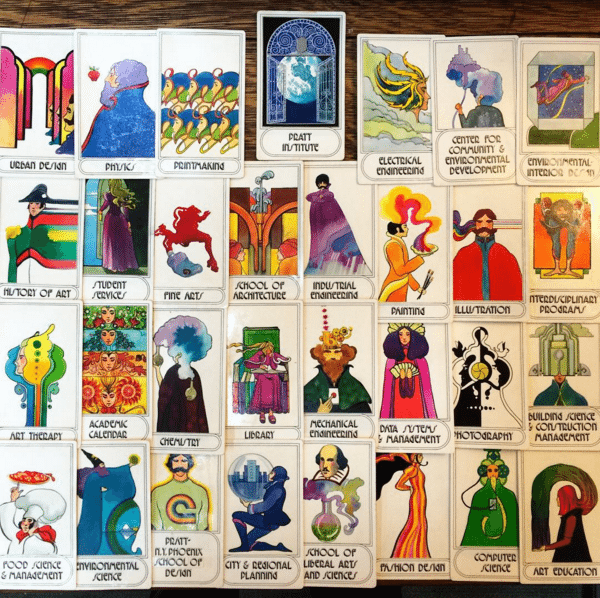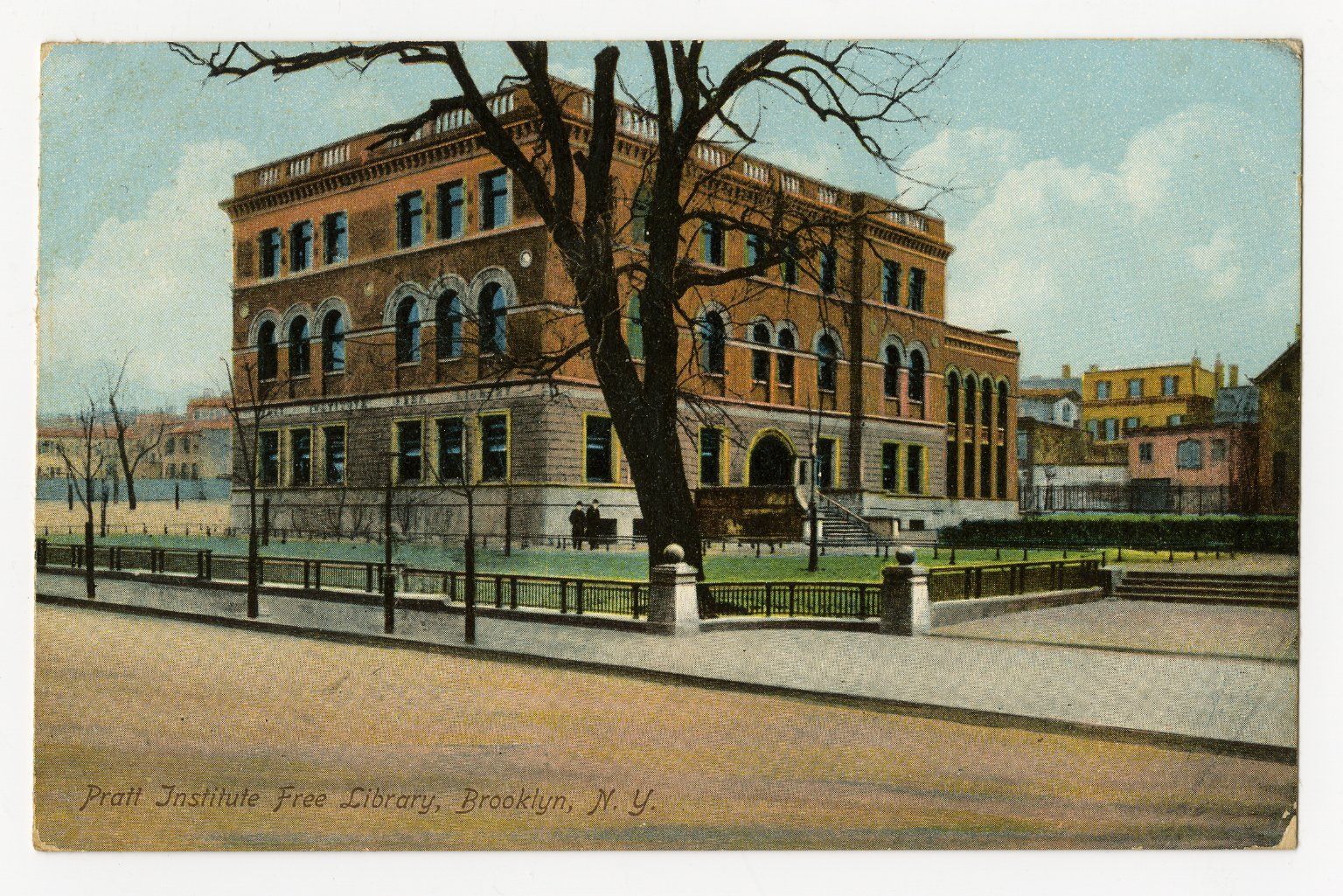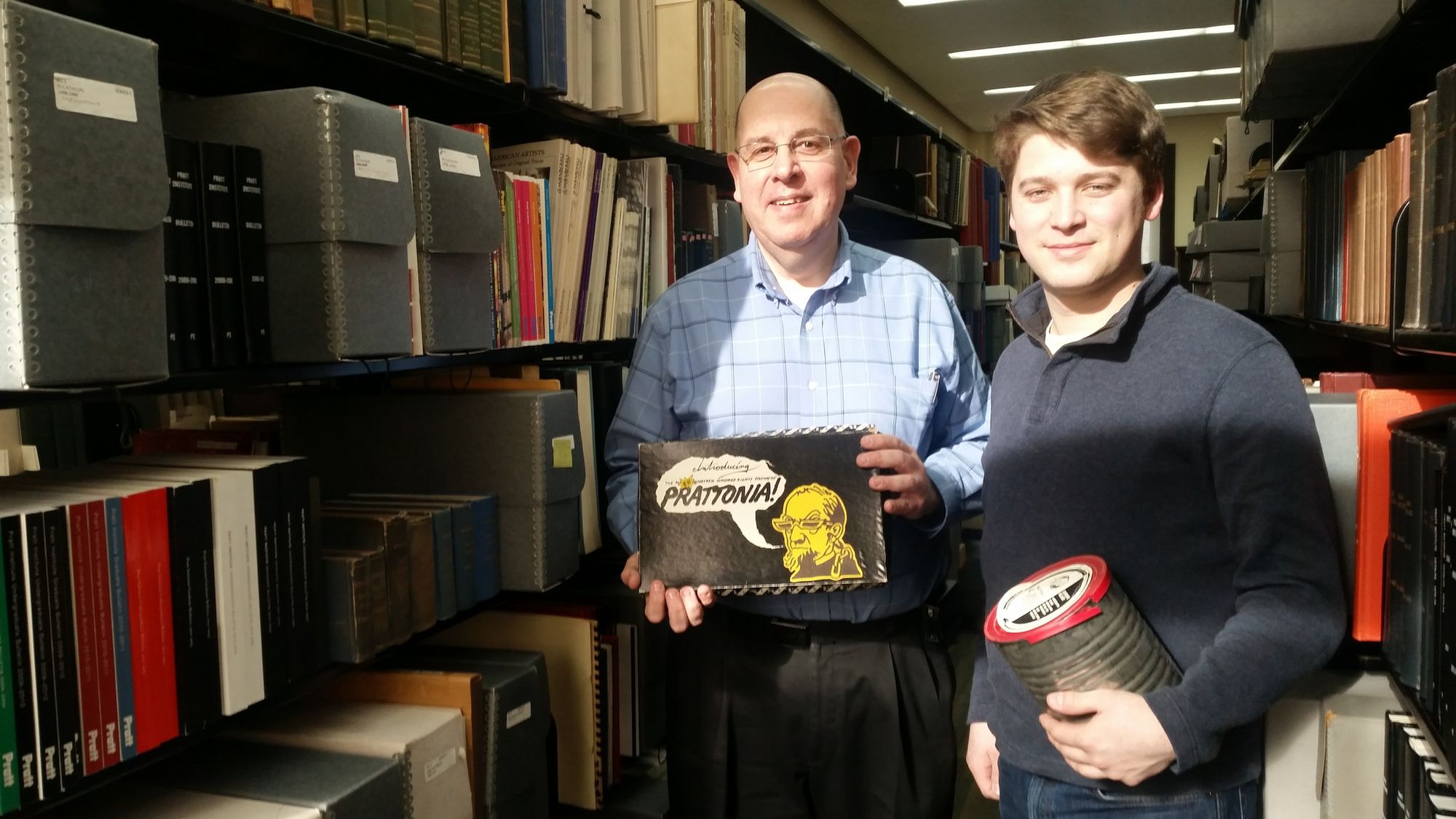Throwback Thursday: Five Historical Treasures From The Pratt Institute Archives


The Pratt Institute Library was erected in 1896 as the first public library in Brooklyn — as well as the only one for the next 15 years — and has since continued in its mission of providing educational materials to anyone, regardless of gender, race, or class. Now, a century later, the library primarily serves the college (founded in 1887) and its students and alumni, but is also home to lots of ephemera, yearbooks, letters, drawings, newspapers, and even textiles and more that have been donated over the years. The Pratt Institute Archives seeks to sort through a lot of this and give us a peek into the past as we move headlong into our future.
Led by librarian/archivist/associate professor Paul Schlotthauer and archives specialist/alum Ian Post, the Pratt Archives actually was not formally recognized until this past year, with Schlotthauer its first archivist, juggling organizational duties with his librarian and teaching duties. And with the addition of Post, thanks to a third-party grant, the Archives has begun taking shape and appearing in outreach efforts — via classroom exhibits and, now, as of this January, an Instagram account!

“Archiving doesn’t change, but technology has improved,” explained Schlotthauer. “Social media makes such a difference. The use of technology allows outreach in a way never possible before. You can be 2,000 miles away, see it, and become aware that these places are important.”
Post updates the account on a near daily basis, highlighting interesting snippets of items that he is in the process of digitizing for the Archives record. From early 20th century fashion and hats to historical, cultural, and political insights, “there’s a lot more awareness now of history,” said Post. “The New York Times has commercialized their archives. We’re pointing out our huge untapped resource.”
There’s a lot to go through, but here are a few of our favorites:
1 — That all-American of sports, baseball. Did you know that Pratt had its own baseball team from the 1890s to at least 1970? Called Big Gold, or the Engineers, or the Cannoneers in the 1950s, the players even competed against other colleges in Brooklyn in the Knickerbocker Conference. Apparently Brooklyn had a whole league of academic baseball teams!
2 — You’ve got to love schools with strong art programs like Pratt. If our course catalogs came in the form of tarot cards, it might have been a bit easier picking which ones had the best omen or were the right fit! These tarot card catalogs listed each school, department, and service at Pratt for 1976 and 1977.
3 — “Long before Title IX, women at Pratt formed a basketball team. A scrapbook from our collection commemorates the undefeated 1900-1901 season. Our school does have an interesting history with ladyballers. There were other women’s basketball teams during the early decades, as well as other sports, and in 1975, Cyndi Meserve was the first woman to play on an NCAA men’s varsity basketball team.”
4 — One of the most unique things we found in the Pratt Archives was the range of yearbooks that are not in actual book form, like this board game, made for each member of the Class of 1981. The goal of “The Game of Pratt” was to accumulate enough credits graduate, passing Positive Chance tiles like “Registrar accidently [sic] gives you eight major credits” and Negative Chance tiles like “Take home Pratt cat. Pay $150 sterilization fee.“ The supplemental booklet includes a poem that sheds insight into the philosophy behind “The Game of Pratt.”
5 — We love that the Archives are growing so much that they’re now attracting donations of textiles and ceramics, like these ceramic works made by industrial design students between 1939 and 1954. They were part of a collection that included former professor and famed designer Eva Zeisel’s papers.
“The top image in this photo shows a salt and pepper shaker (unfortunately missing its cap) next to its appearance in an article from 1945. Many of Zeisel’s students went on to become recognized designers and ceramicists in their own right, such as Ben Seibel, Gerald Gulotta, and Francis Blod.”
For more information, to inquire for research or about a family member or research subject, or to view the collection, email Paul Schlotthauer at pschlott@pratt.edu.